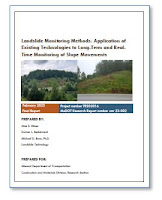With over a decade of crash data available since the beginning of flashing yellow arrow (FYA) use, MoDOT decided to objectively investigate the safety performance of the system. Additionally, they wished to have an accurate inventory of all FYA installations statewide, and a determination of the benefit-cost ratio of the signal system. A virtual survey of every signalized intersection on the MoDOT system revealed 841 FYA signals, and the research team either recorded dates relayed by MoDOT or estimated them from as-built plans or photo logs. A simple before and after analysis revealed FYA operation appears to reduce KABC left turn opposite direction crashes about 14 percent and left turn opposite direction O crashes approximately 18 percent when protected-permissive left turn phasing is used before and after FYA installation. Further, this analysis estimates that the lifecycle benefits of installing FYA on an intersection approach are expected to be approximately 5 to 44 times greater than the installation cost, depending on the left turn phasing used before and after FYA installation.
Report number: cmr 23-005
Published: February 2023
Published: February 2023
Project number: TR202102
Authors: Joseph G. Jones, Nick Foster, and Kush Bhagat
Authors: Joseph G. Jones, Nick Foster, and Kush Bhagat
Performing organization: Leidos, Inc.



